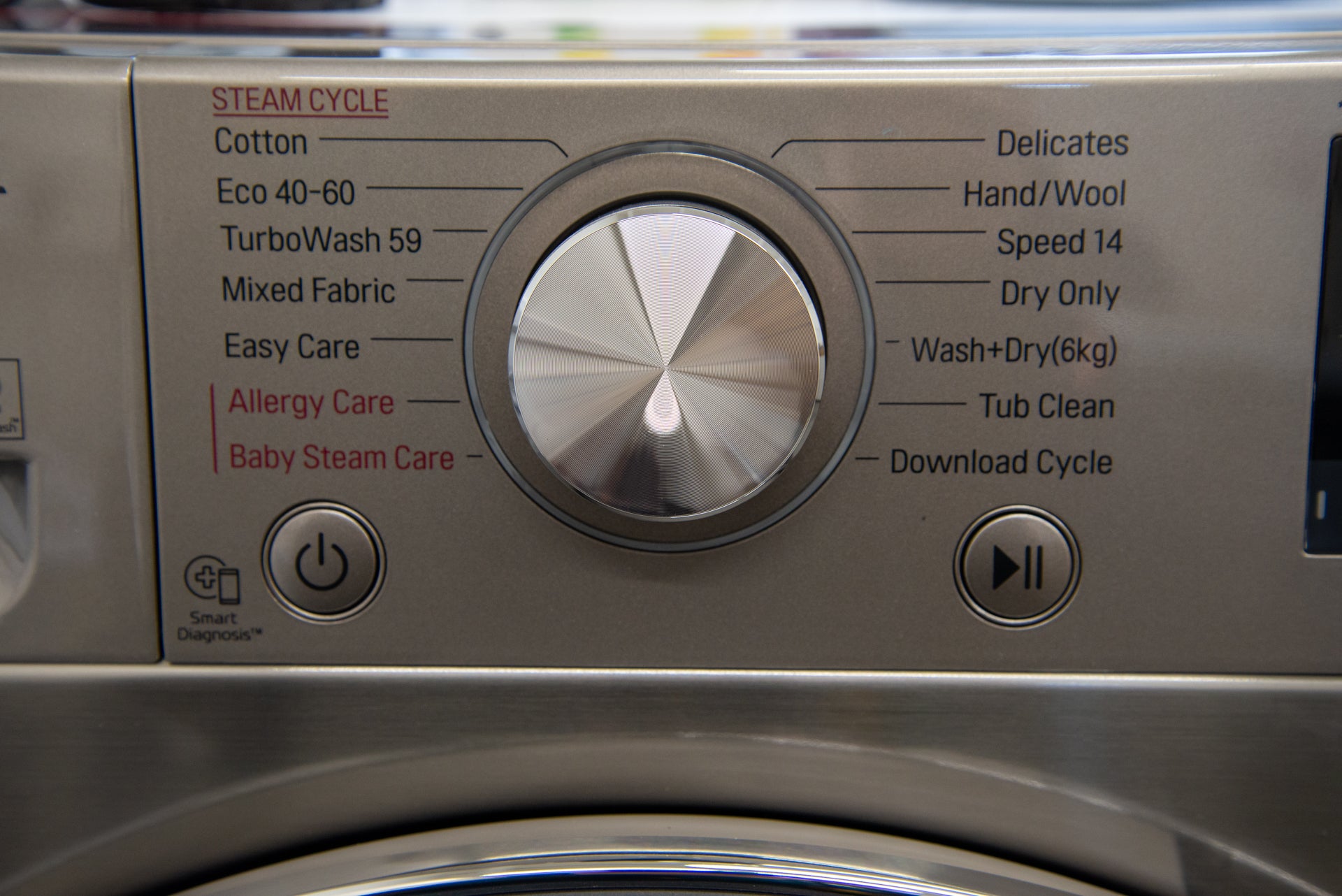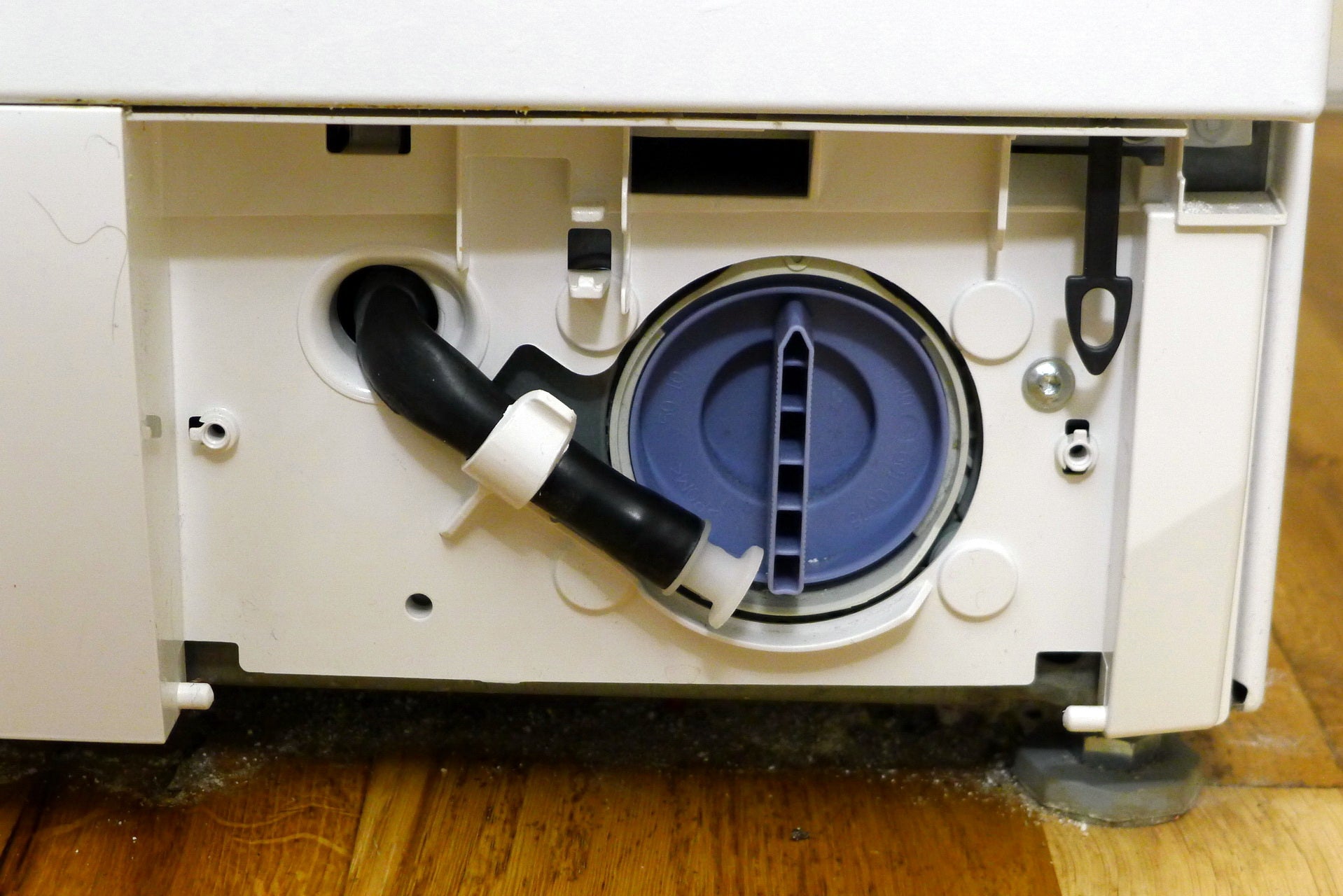How to fix a washer dryer that leaves clothes hot and wet
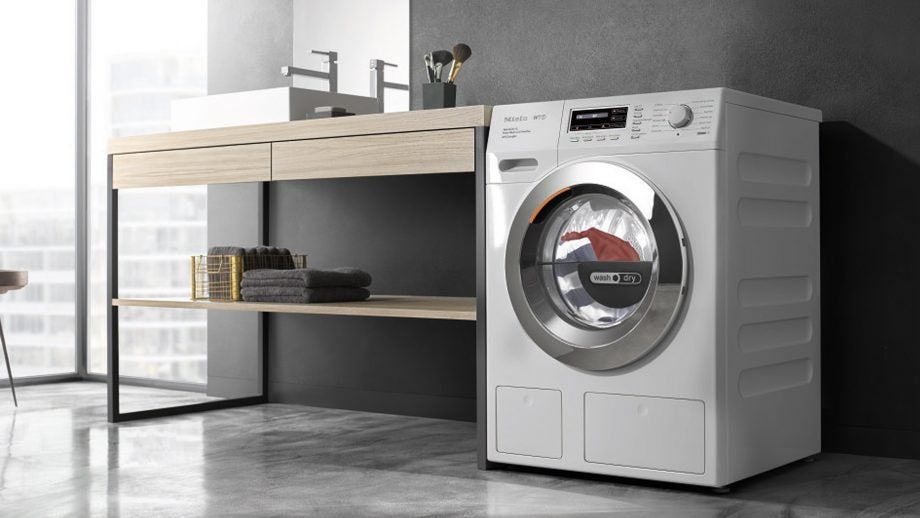
A washer dryer is great for convenience, especially if you’re short on space. However, such appliances tend not to be as reliable as opting for a separate washing machine and tumble dryer due to the way they work. In this guide, we look at how to fix a washer dryer that leaves clothes hot and wet.
We’ll reveal the most common problems, plus how you can get a better idea of where the problem lies. In many cases, you’ll be able to get your washer up and running properly again – although if you’ve run through the options below, and it’s still not working, you may still need an engineer to look at your appliance.
How does a washer dryer dry clothes?
To understand what could be causing the issue, we first need to understand how a washer dryer dries clothes. Similar to a regular tumble dryer, washer dryers use a heater to turn water into vapour, which is then condensed (turned back into a liquid) and pumped out like the water used for cleaning.
A heating element in the machine warms the air creating steam from the moisture in your clothes. This steam is then pushed into the condensing unit via a fan and vent. To turn it back into a liquid, the condenser needs to be cold. To cool the condenser down, a washer dryer uses the cold water input, trickling it down through the condenser. This water then runs into the bottom of the washer dryer, where it’s pumped out.
Why are my clothes hot and wet in a washer dryer?
Now that we understand how a washer dryer works, there are three main reasons for your clothes failing to dry properly:
- There’s no water coming into the condenser
- There’s a blockage in the condenser, preventing water dripping down
- The fan isn’t working or is blocked
If water isn’t flowing into the condenser, it’s usually because the valve is broken and needs replacing. You can test this with a multimeter if you have one; but in most cases, and once you’ve ruled out other problems, this will require the services of an engineer.
Likewise, you can confirm a broken fan using a multimeter, but for this too you’ll need an engineer to fit a new one.
However, if your washer dryer is leaving clothes hot and steamy, then it’s probably a result of a blockage somewhere. If you’re DIY-savvy then in most instances you’ll be able to fix the issue yourself. Here’s what to look out for.
How to clean a washer dryer’s condenser
The condenser is typically a plastic box that sits at the back of the washer dryer. The layout of all washer dryers is usually fairly similar, although the screws can be in different places. To get inside your washer dryer, you’ll need to remove the top and the rear. Before you start, turn off the machine at the mains and the water supply, too. You’ll need to pull your machine forward to get access.
The top usually comes off after having removed a couple of screws (you may need some Torx bits if standard crosshead or Phillips-head screws aren’t used). Once the screws are out, the top can be pulled away – it may require some force. The rear panel is held in place with a series of screws: remove these and the panel should fold down.
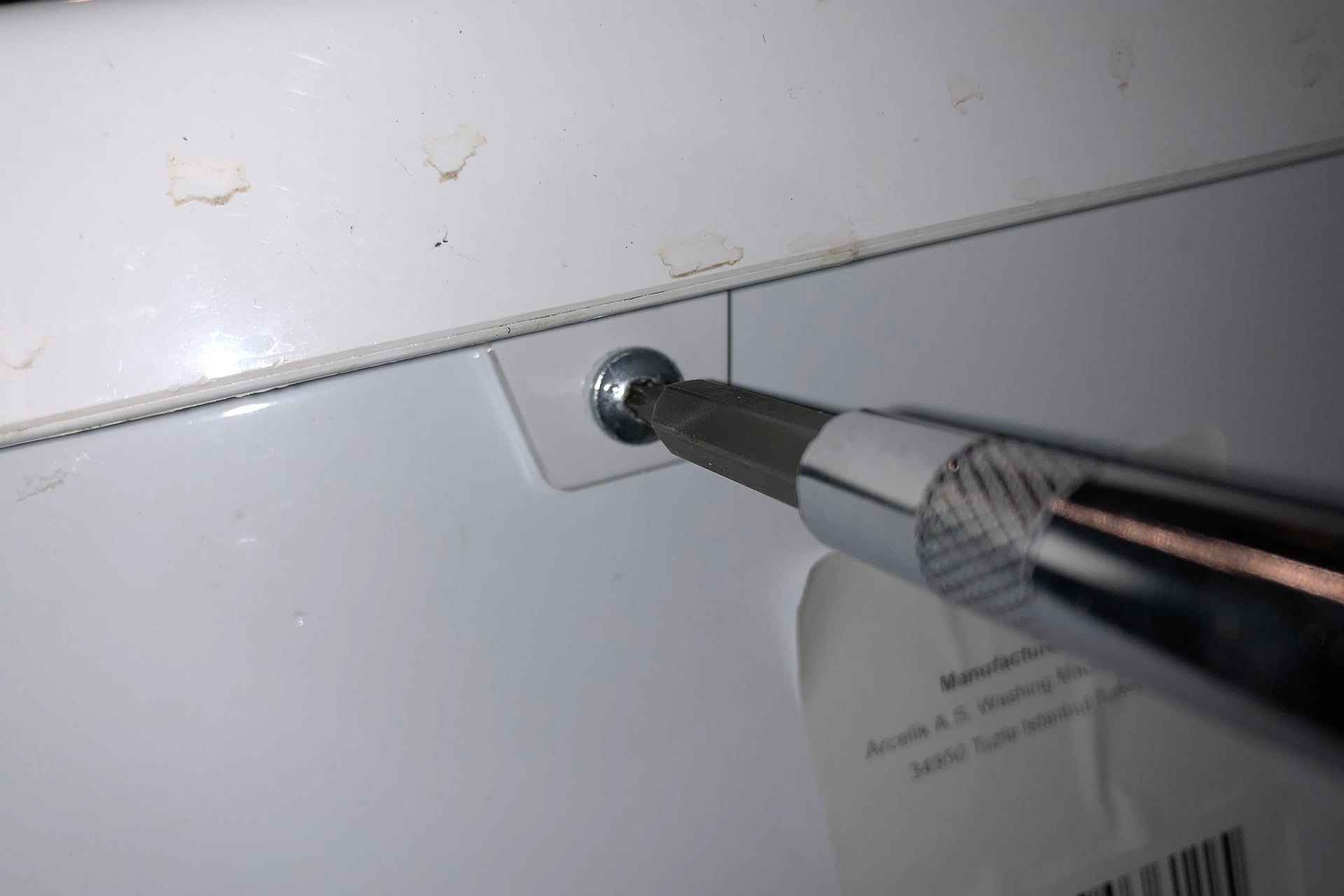
Inside the machine, you should see a metal box on top of the washer dryer with a series of cables plugged into it. This contains the heating element, which will be connected to a vent at the front or rear of the drum. It is from here that hot air is pumped into the appliance. Beneath this you should see a long plastic box that has a water tube connected to it: this is the condenser.
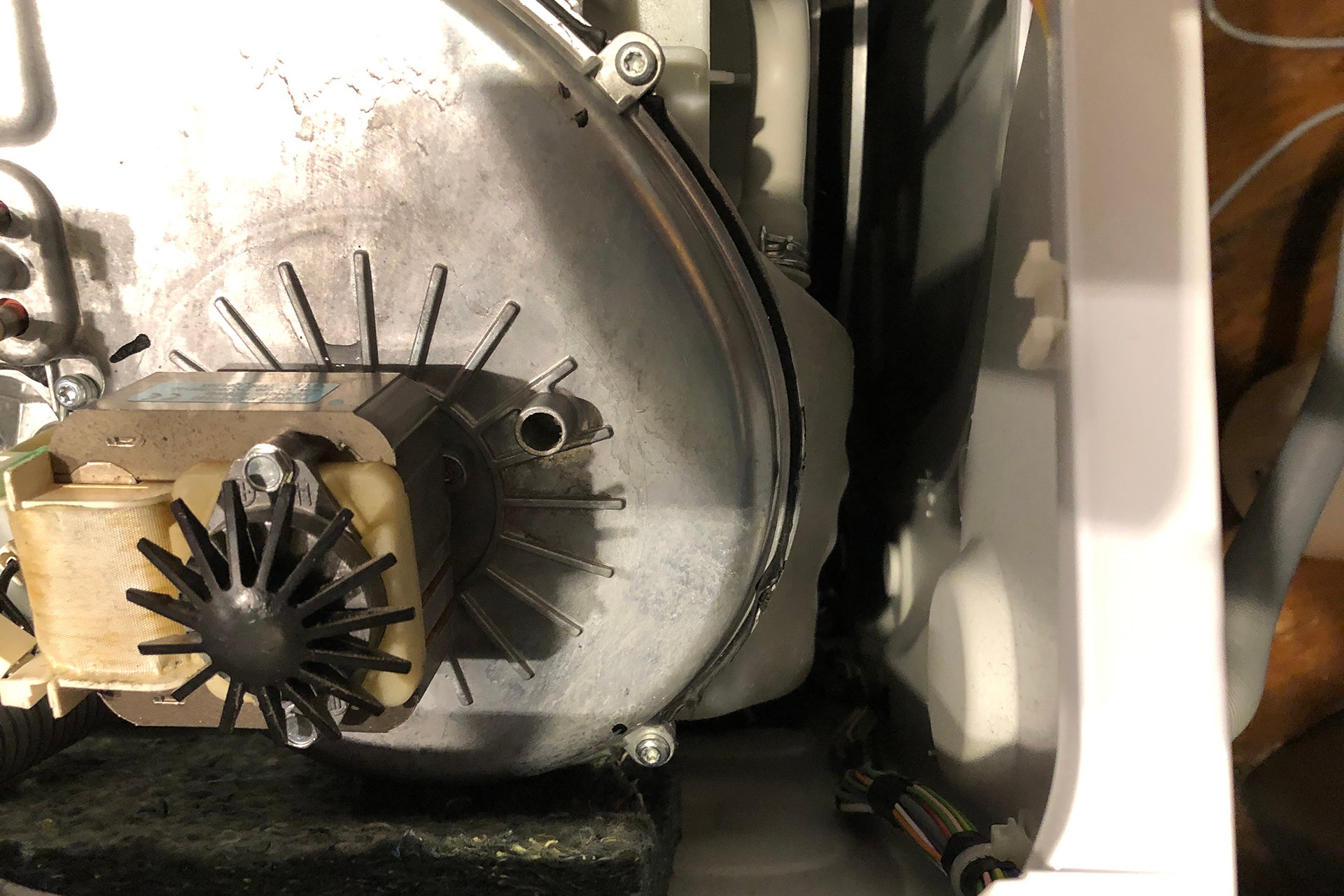
Getting the condenser out won’t be easy, with exact instructions differing from one appliance to the next. With our washer dryer, we first had to undo the screws holding the heating element in place, and next the screws holding the condenser in place. A set of pliers were used to remove the water hose.
With all screws removed, we could pull out the plastic condenser unit by first lifting out the heating element box. The condenser should pull out of its connection at the base of the washing machine, then move upwards to come clean away.
Inside, you’re likely to see build-up of fluff from your clothes, which is likely to be the cause of the problem. Using a hose or tap, rinse out the condenser until all of the fluff is out. You may find it useful to use a pipe cleaner to get in and dislodge any dirt that’s really stuck. Make sure that the water inlet is clean, so that water can flow in and through the condenser.
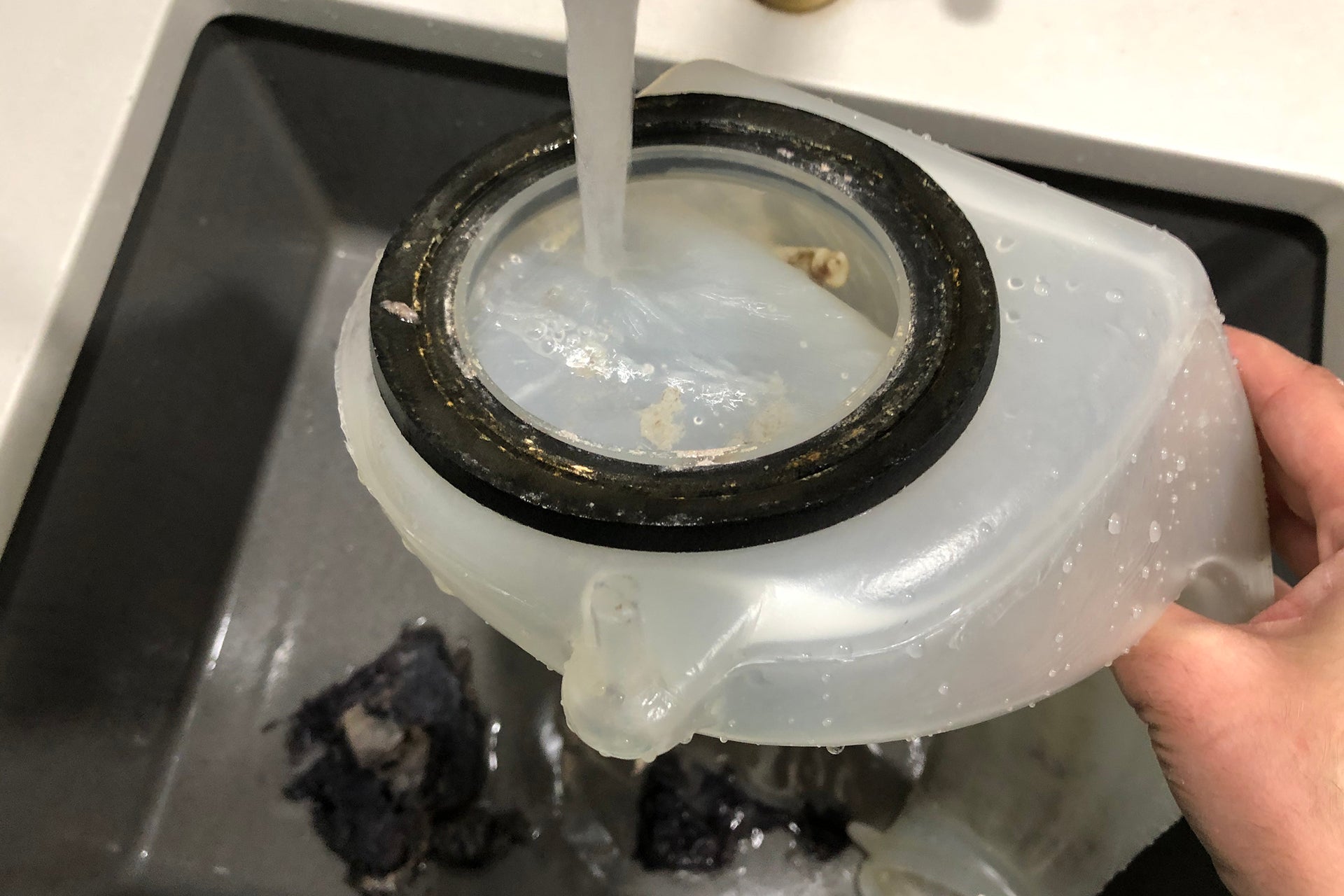
How to clean a washer dryer’s fan
There’s a good chance that the fan is also clogged with dirt, which prevents the air from being circulated. As such, you’d be wise to clean out the fan, too. You may find this easier to do by removing the entire heating box from the washer dryer.
To do this, take a photo of where all of the cables go, so you can put them back properly. The cables should just unplug, but watch out for those that have a clip. With the cables removed, you need to loosen the connection between the heating element and the drum. You may have to release a cable tie or, as on our machine, undo a screw in a fiddly place. We used a set of pliers to loosen the screw, before using our fingers. With all of this done, you should be able to lift the heating box out of the washer dryer.
If you turn it over, you’ll see the fan, which may be caked in fluff. You can remove the dirt using a pipe cleaner or similar. The unit is sealed, but if you’re using water to remove the dirt you need to take care – you don’t want to get the fan’s motor, or the electric connections, wet. We recommend opting for a dry clean here.
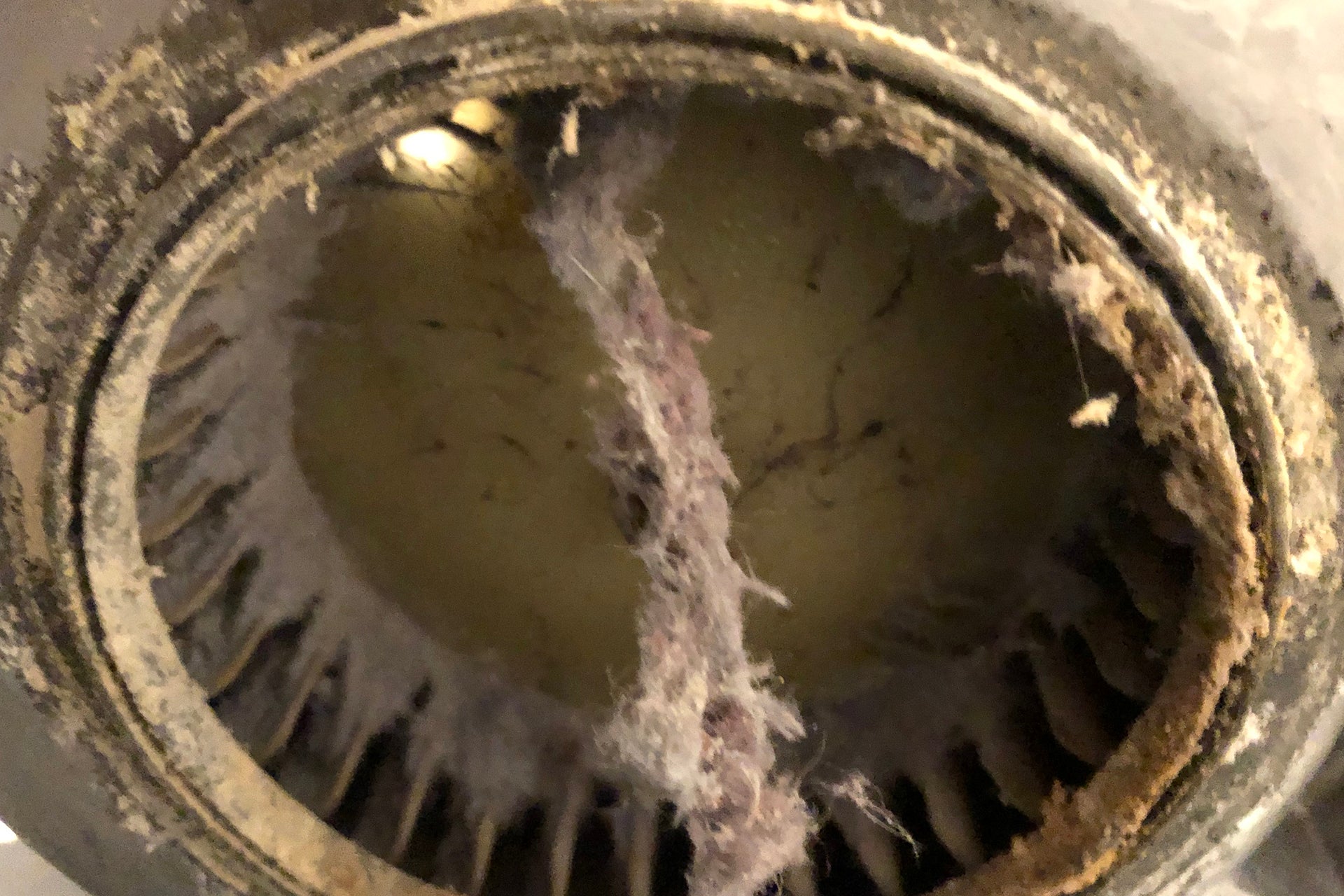
Give the fan a push when you’ve cleaned everything out to see if it spins freely. If it does, then you’re good to go – although you can use a little spray of WD40 to help lubricate it.
Once done, you can begin the reassemble. It makes sense to put the condenser in first, securing it in place using the screws. Ensure that there’s a tight connection between the bottom of the condenser and the drum. Next, reattach the water hose, ensuring it’s securely clipped into place.
You can now sit the heating element back in place; there should be a tight connection between it and the condenser. Remember to tighten up the connection between the heating element and the drum, and to reattach the cables as shown in your photo. Ensure all screws are holding items sercurely in place.
You can now fit the lid and rear panel, before plugging your washer dryer back in and turning the water back on. Now, when you next dry your clothes, they should come out dry. If they don’t, it’s probably a broken fan or water valve, for which you’ll need to call out an engineer.



